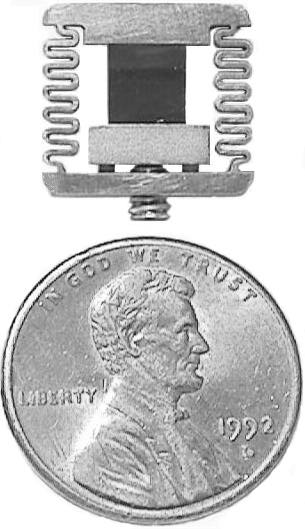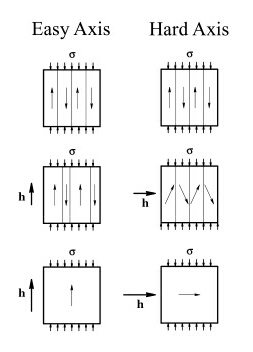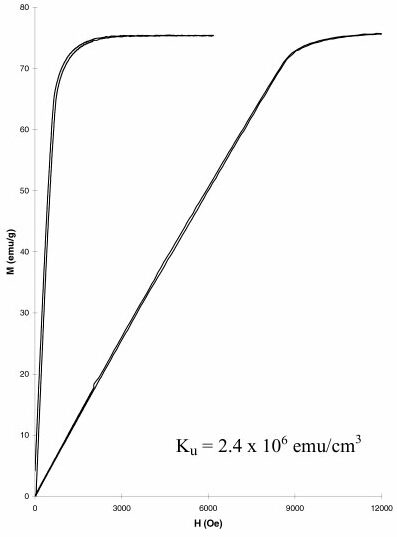|
The martensitic anisotropy measurements were designed to determine the anisotropy constant
for a single variant of Ni2MnGa martensite. The strategy of the tests was to
compress the specimen into a single variant microstructure using the small fixture shown to the
right, and generate M-H curves parallel and perpendicular to the compression axis as shown.
The fixture was constructed from a non-magnetic CuBe spring alloy and sized to fit in the cooling
fixture used with the VSM. Stress was applied to the specimen with the small set screw; the amount
of extension set with the screw controlled the load applied to detwin the specimen on cooling below
Ms, and also determined the amount of stress present on the single variant specimen after transformation. The applied stress in the single variant state was an important parameter in the
tests, for it was required to prevent the nucleation of a second variant for applied fields
perpendicular to the compression axis (far right figure), and also allowed for a determination of the ordinary magnetostriction constant from stress anisotropy effects.
|
|


